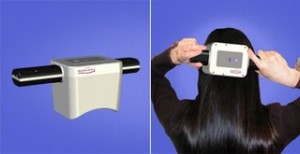 RSS FEED
RSS FEED
Posts Tagged ‘Chronic Daily Headache’
Headache on the Hill
February 25th, 2009
 I spent the day yesterday doing something I’ve never done before – lobbying Congress. I’m not entirely sure I would ever have predicted that I would lobby Congress. It was a great experience, and one that I’m sure will take me several posts to process and tell you about. But I can at least get started. The Alliance for Headache Disorders Advocacy (ADHA) is a wonderful group of doctors, advocates, writers and researchers who are fighting for better headache care for YOU. I arrived in DC on Monday for a training session put on by the AHDA and learned some key things about the underfunding of Migraine and headache disorders research, and about how to lobby.
I spent the day yesterday doing something I’ve never done before – lobbying Congress. I’m not entirely sure I would ever have predicted that I would lobby Congress. It was a great experience, and one that I’m sure will take me several posts to process and tell you about. But I can at least get started. The Alliance for Headache Disorders Advocacy (ADHA) is a wonderful group of doctors, advocates, writers and researchers who are fighting for better headache care for YOU. I arrived in DC on Monday for a training session put on by the AHDA and learned some key things about the underfunding of Migraine and headache disorders research, and about how to lobby.
Nearly 40 of us spent Tuesday on Capitol Hill speaking to legislators and legislative aides. I visited two senators and three congressmen from my state, along with another Migraine sufferer. We were requesting that they add language to the 2010 appropriations bill which will direct the National Institutes of Health (NIH) to spend a larger share of their funds on Migraine and Headache Disorder research.
Here are some of the things I learned, straight from the AHDA fact sheet which we shared with the legislative aides:
Headache Disorders are the most prevalent neurological disorders. This year:
- More than 25% of middle aged American women will have a Migraine attack.
- 25% of American families will have a member with a Migraine attack.
- 19% of all Iraq war veterans will have a Migraine attack.
- 12% of all Americans will have a Migraine attack.
- 4% of all Americans will have chronic daily headache.
US costs for headache disorders this year will be:
- greater than $31 billion in total economic losses.
- 9% of all lost labor productivity.
- greater than the costs due to epilepsy, asthma and ovarian cancer combined.
Migraine is extremely disabling, resulting in:
- attacks that can be as disabling as quadriplegia or active psychosis.
- more lost years of healthy life in the US than due to epilepsy, multiple sclerosis, and ovarian cancer combined.
- an increased risk of cardiovascular disease leading to at least 1500 additional deaths in the US annually.
What has the response of the NIH been so far? The NIH is responsible for funding, with our taxpayer dollars, the basic research that makes medical innovation possible. So far the NIH funding for research on headache disorders is less than $13 million annually which comes to less than 0.05% of the NIH budget. Research of NIH funding relative to disease burdens (the impact of a disease on society, including prevalence, economics, disability, and mortality, as discussed above), shows that a fair share of funds for headache disorders (compared to other diseases with similar disease burdens) should be at least $103 million annually.
We got a good reception, particularly from our senators’ aides. There is more work to do, but I think we are making an impact. You can make an impact too. Go to the ADHA site and sign up for their action alerts. On Monday, March 2 we will be asking you to email your congressional representatives, asking them to sign on to the language directing the NIH to do the right thing with regard to headache disorders. If you sign up for AHDA action alerts today, taking action next week will be as easy as a couple of clicks.
– Megan
We can make a difference!
US Capitol image courtesy of Kim Baker.
Tags: AHDA, Alliance for Headache Disorders Advocacy, Chronic Daily Headache, disability, disease burden, headache disorders, migraine
Posted in Advocacy, Current Affairs, Medicine, Science, Uncategorized | Comments (9)
Highlights from the American Headache Society Annual Conference
July 1st, 2008
 Last week the American Headache Society held its 50th annual conference in Boston. You may have read other news of the proceedings and the many new discoveries, inventions, understandings, and treatment options that were presented at the conference. Lead expert Teri Robert of My Migraine Connection and Migraine blogger Eileen of My Life with Migraine attended the conference and will be posting a lot of information in the weeks to come. If I may relay some tidbits second-hand, I was inspired to hear of their experiences in a collegial atmosphere where a number of dedicated medical professionals and advocates are working and sharing ideas to help bring us relief from this life-stealing disease. I wish I could have gone along, but first things first. I need to get my own migraines under better control before attending conferences, which have always tended to trigger me. Though I suppose there might be no better place to be with a migraine!
Last week the American Headache Society held its 50th annual conference in Boston. You may have read other news of the proceedings and the many new discoveries, inventions, understandings, and treatment options that were presented at the conference. Lead expert Teri Robert of My Migraine Connection and Migraine blogger Eileen of My Life with Migraine attended the conference and will be posting a lot of information in the weeks to come. If I may relay some tidbits second-hand, I was inspired to hear of their experiences in a collegial atmosphere where a number of dedicated medical professionals and advocates are working and sharing ideas to help bring us relief from this life-stealing disease. I wish I could have gone along, but first things first. I need to get my own migraines under better control before attending conferences, which have always tended to trigger me. Though I suppose there might be no better place to be with a migraine!
The conference will provide material for many posts, both here and all around the Migraine blogosphere. I’m going to share a couple of highlights that I am particularly interested in, and we’ll touch on more of the new information as I have a chance to digest it.
One new device which looks promising is the transcranial magnetic stimulation, or TMS, device. Tested for use by those suffering from Migraine with Aura, the TMS device is held at the base of the skull at the first sign of aura (visual and sensory disturbances experienced by about 20% of migraineurs). You push a button to deliver two short magnetic field pulses to the brain. Apparently these pulses scramble and abort the abnormal electrical activity which takes place in the brain during a Migraine attack. The basic black and white model looks good for this raven-haired lady; maybe they’ll come out with some more colors soon! But seriously, this is a great alternative, since everyone can’t use triptans, and even if you can, triptans knock you out of action for a while.
 New research was presented about Why Pain Becomes Chronic. New understandings of how pain becomes chronic can help headache specialists develop new therapies which can help sufferers with Chronic Daily Headache. One of the new understandings involves the role of glial cells in the brain, which agitate neurons, increasing pain signals to the brain. Use of opiates appears to activate glial cells, so can contribute to the development of chronic pain. Research was also presented indicating that expectation of pain affects its severity, that in the case of chronic pain, the nervous system “over-reacts” but that this overreaction is physiological, not psychological. A very important distinction – biological changes have been observed in the nerves themselves. In other words, the pain is “all in our heads,” in physiologic structures in the brain, not “all in our heads” in any psychosomatic sense. I must say I feel vindicated – read my post It’s All in your Head on the difference between what’s in our heads physiologically and the old psychosomatic accusation we are so often subjected to.
New research was presented about Why Pain Becomes Chronic. New understandings of how pain becomes chronic can help headache specialists develop new therapies which can help sufferers with Chronic Daily Headache. One of the new understandings involves the role of glial cells in the brain, which agitate neurons, increasing pain signals to the brain. Use of opiates appears to activate glial cells, so can contribute to the development of chronic pain. Research was also presented indicating that expectation of pain affects its severity, that in the case of chronic pain, the nervous system “over-reacts” but that this overreaction is physiological, not psychological. A very important distinction – biological changes have been observed in the nerves themselves. In other words, the pain is “all in our heads,” in physiologic structures in the brain, not “all in our heads” in any psychosomatic sense. I must say I feel vindicated – read my post It’s All in your Head on the difference between what’s in our heads physiologically and the old psychosomatic accusation we are so often subjected to.
Yet another piece I am particularly interested in deals with Migraine in women and the role of hormones and the menstrual cycle. More on that when I know more!
Overall, the good news is, there are good people out there looking out for us, working hard to find ways to treat this disease.
– Megan Oltman
Neurons image courtesy of Rebecca Radcliff.
Tags: American Headache Society, Chronic Daily Headache, chronic pain, glial cells, Migraine treatment, Migraine wih Aura, transcranial magnetic stimulation
Posted in Advocacy, Medicine, Science | Comments (4)
That disclaimer thing...
Remember: nothing we do here is medical advice or treatment or is a substitute for medical advice or treatment. Get competent medical advice to learn more about your migraines, possible treatments and risks.
What's New on Migraine Support Group Coaching |
Recent Comments
- on Calling all Redheaded Migraineurs
- on No, You’re not Crazy, You just Have Migraines
- on No, You’re not Crazy, You just Have Migraines